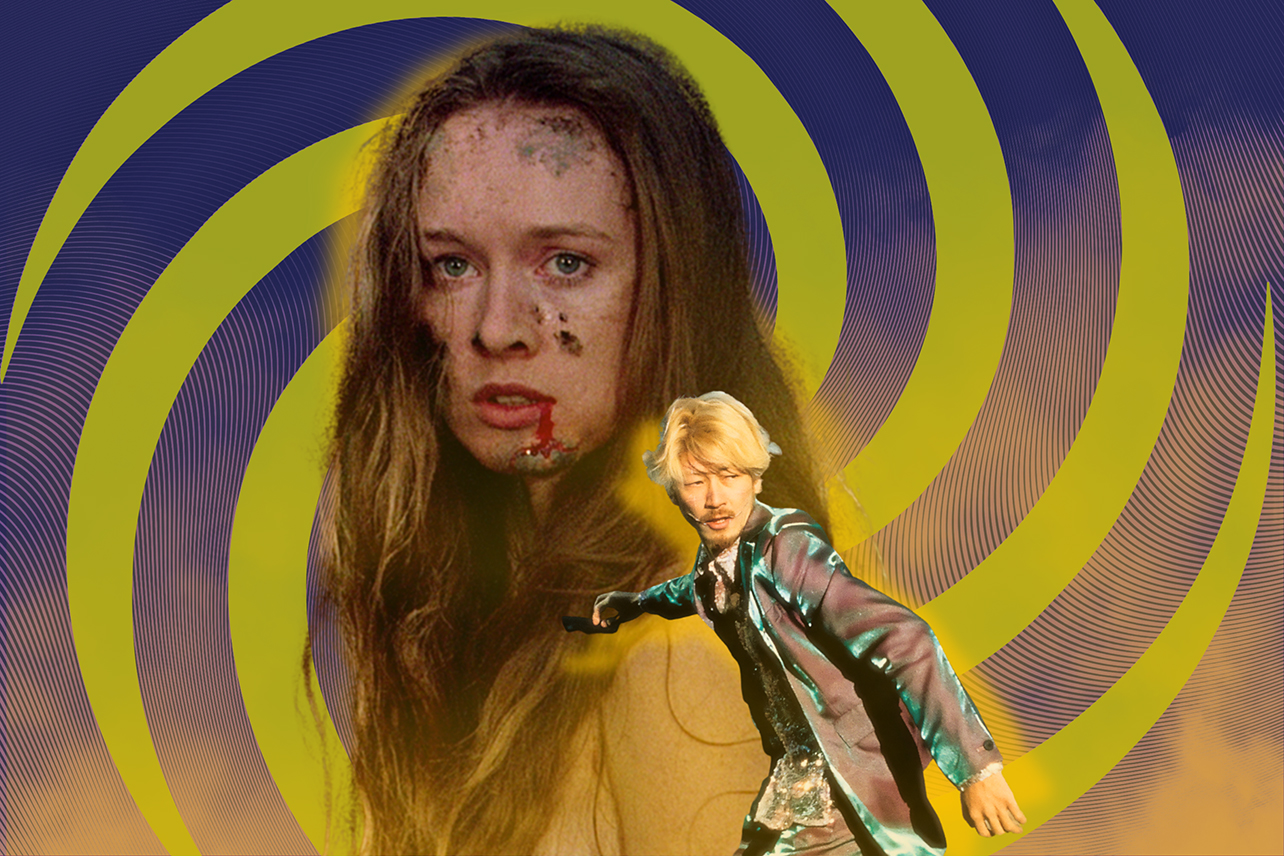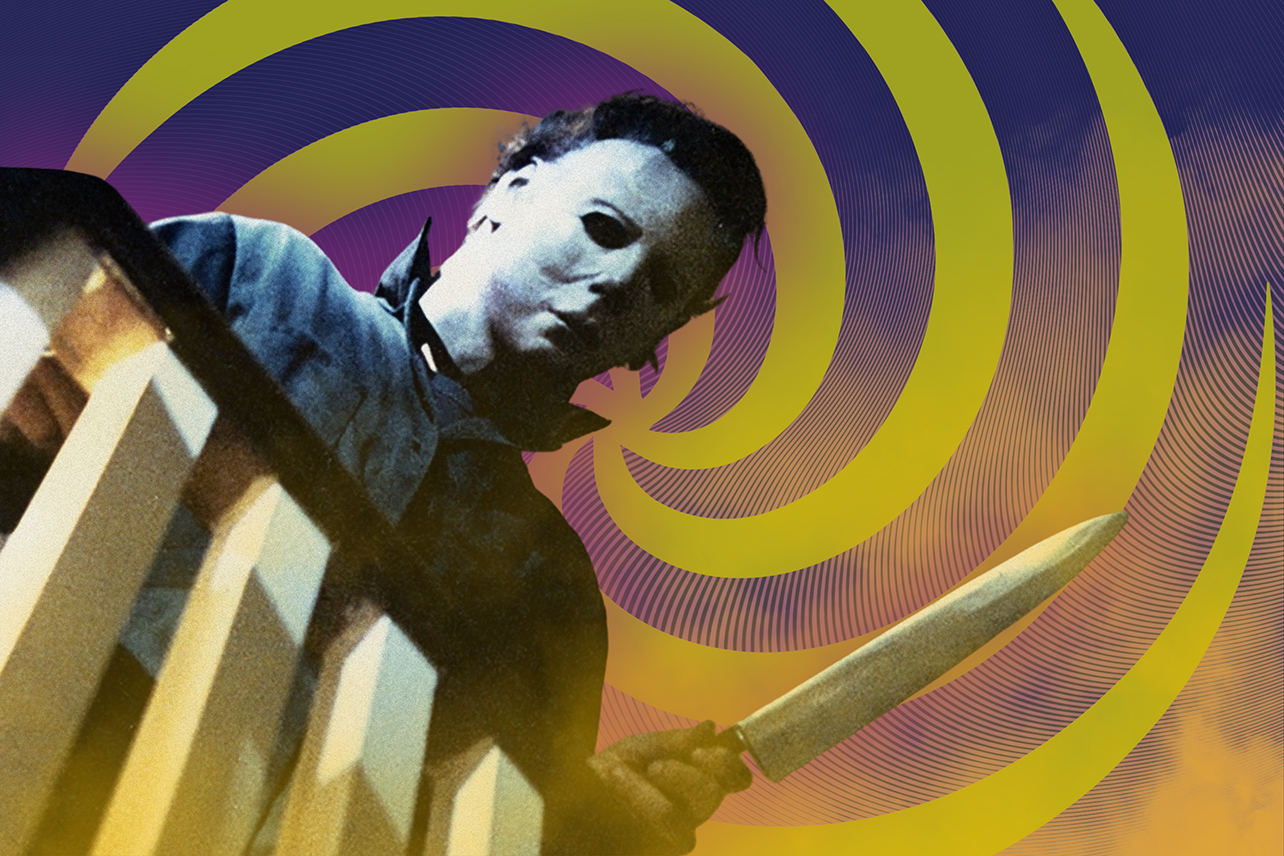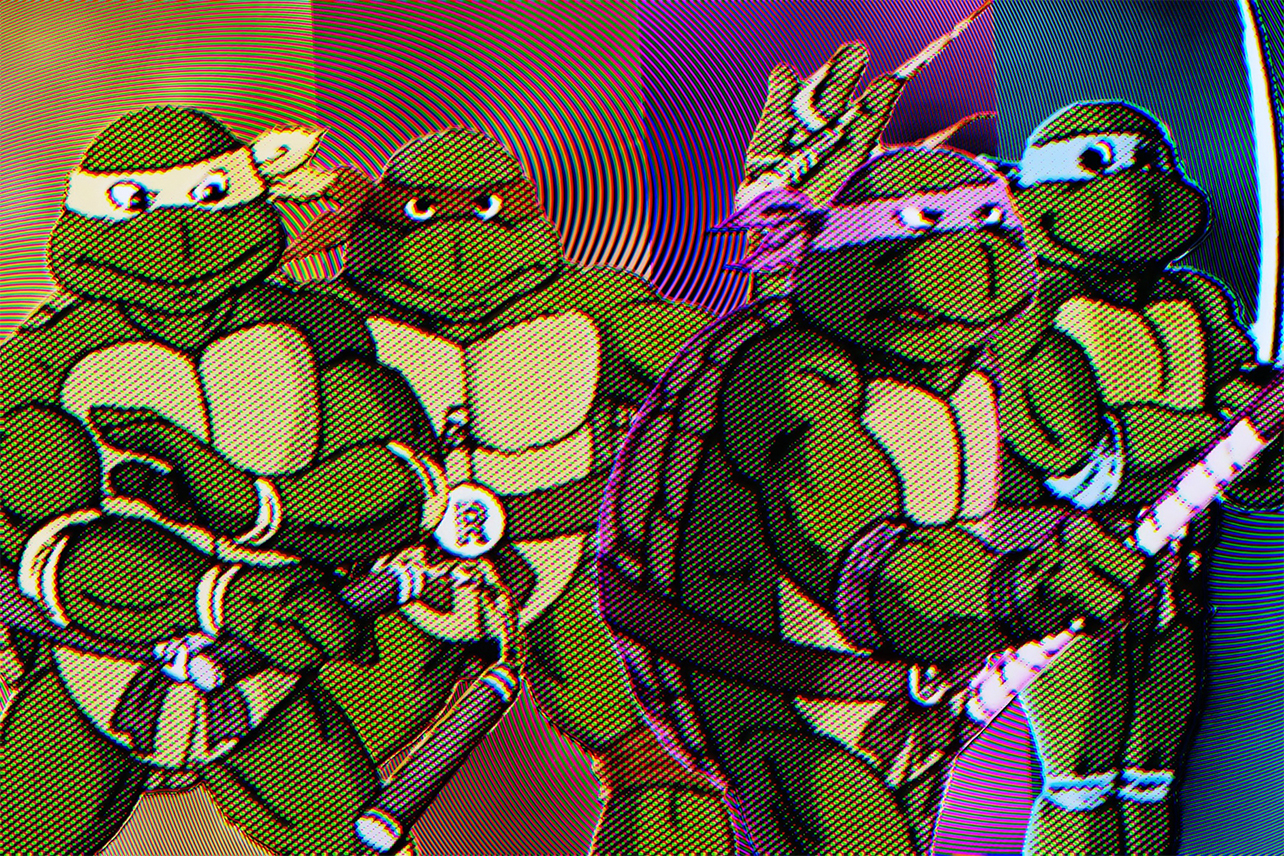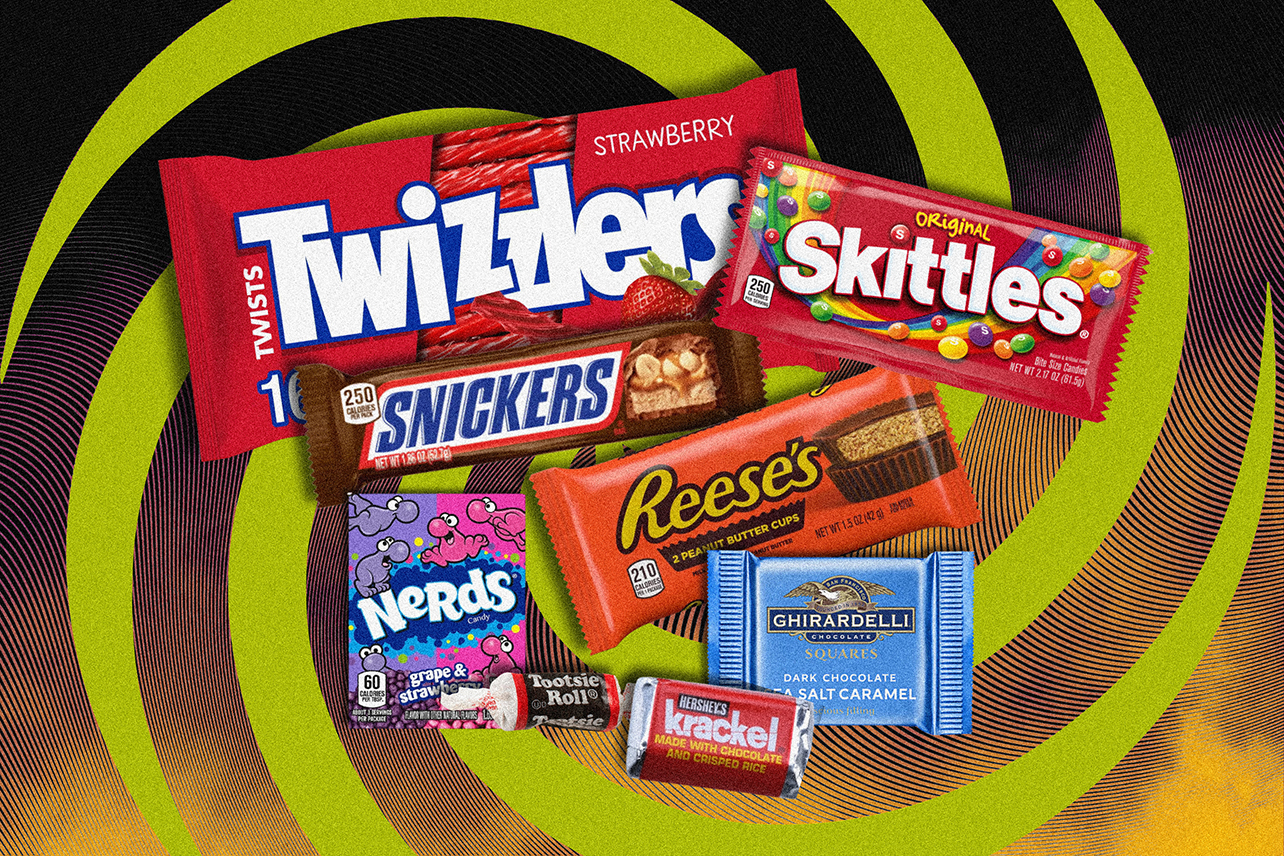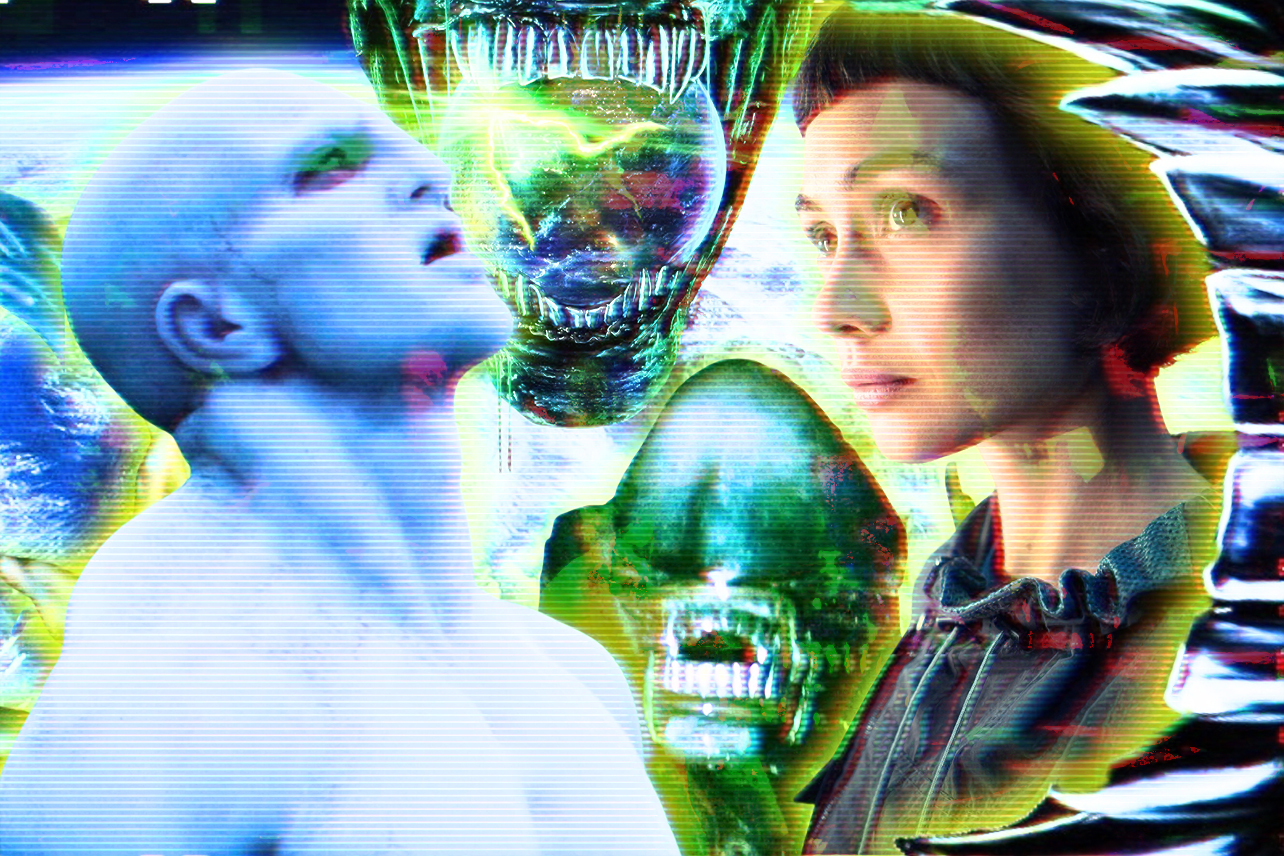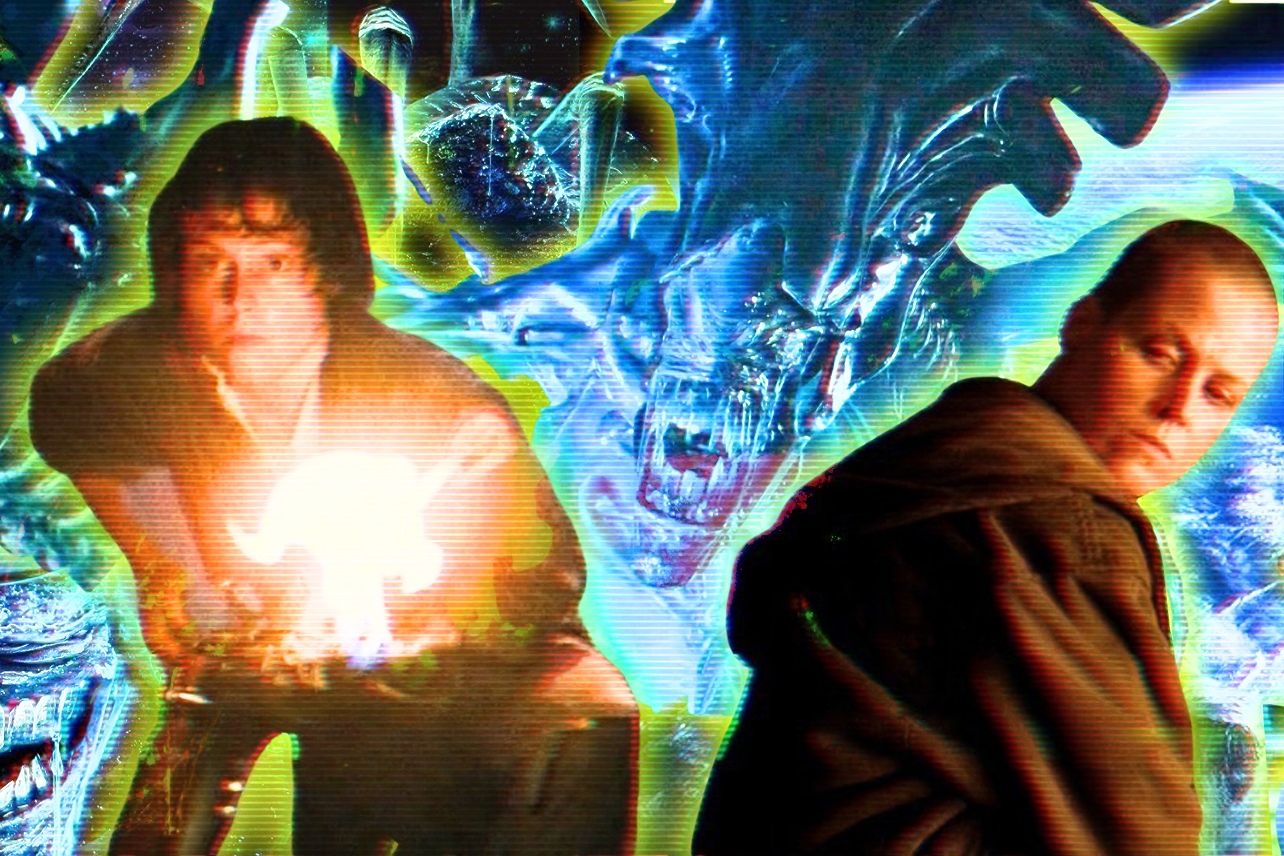So after 10,000 years you've decided now's a good time to see what this Power Rangers thing is all about. First, welcome fellow spandex enthusiast!
Second, your timing is impeccable: the television show as it existed for 30 years* was canceled in 2023! I'll get around to explaining that and the asterisk in a moment, but please understand that unless capitalism suddenly gives up the ghost, there will all but certainly be new Power Rangers art to engage with until you cross over to that great Animarium in the sky.
But for now, there's nearly 1,000 episodes (you read that right), hundreds of comic stories, three movies, and even an official audio adventure to explore — all carefully crafted to delight your inner child and inspire you to buy oodles of action figures from your favorite Toys 'R' Us Walmart eBay seller.
I'm not gonna say it, you know what time it is.
(Okaya, I'll say it.)
It's readin' time!
What is Power Rangers?
Power Rangers is a team-based superhero franchise that originated as a kids TV show in 1993. That TV show for the entirety of its original run was created, in part, by adapting footage from Super Sentai, a team-based superhero franchise that started as a kids TV show and manga in 1975. The extent of Super Sentai footage used in Power Rangers varies wildly from season to season, but in general a quarter of an average episode features footage shot in Japan.

Both shows typically revolve around a group of five to six teenagers (or young adults) who can "morph" into super-powered versions of themselves, with each individual distinguished by the color of their costume, design of their helmet and personal weaponry. While typically human or human-like, those who've morphed have also included balls of light, bi-pedal alien birds, and quadrupedal alien cats.
The Power Rangers fight rubber-suited monsters and other villains from space, and by the end of most episodes those baddies will grow to Godzilla-sized proportions. The Power Rangers counteract that development with their "Zords" — giant mecha that can combine to form an even bigger robot. They almost always save the day and then celebrate with a smoothie, dance party or whatever fun thing ties into the theme or moral of a given episode.
Speaking of Godzilla, both Power Rangers and Super Sentai are recognized as "tokusatsu" entertainment alongside the big guy. Tokusatsu — officially recognized as a loan word by the Oxford English Dictionary as of 2024 — is a decades-old portmanteau (tokushu-satsuei) that means "special photography," and taken literally refers to any live-action entertainment that uses special effects. In practical usage, it typically refers to a specific kind of entertainment whose aesthetic was achieved through a combination of unique filming techniques honed in Japan, their roots in historic theater. Toku is a little bit like porn: you know it when you see it — but it's even more exciting.
Who created Power Rangers?
Media mogul Haim Saban is widely known as the creator of Power Rangers, and his surname is technically part of the name of many seasons of the show. But everyone just chooses to ignore that last bit, which is great.
Saban's the guy who happened to own the rights to adapt Super Sentai at the right time, but history should remember Margaret Loesch as another rightful parent of the program. She was president of the Fox Kids Network who fought for the show after Saban pitched it in 1992, largely because she had fought for it less than a decade earlier when Marvel Productions held the adaptation rights.
After a successful push into the country with Toei's 1978 Spider-Man series thanks to an often unsung licensing representative, Gene Pelc, Marvel co-produced and owned the rights to a few Super Sentai series. While president at Marvel Productions in the mid-1980's, Loesch and Stan Lee (you know who that is) failed to get any networks on board with any form of an adaptation. Saban picked up the rights not long after. He ran into the same walls until Loesch surprised him with her enthusiasm and greenlit an adaptation of the then-current Super Sentai series based on dinosaurs, Kyōryū Sentai Zyuranger.
Toy company Bandai might have as much a claim to "creator" status as any human, too. Their influence was all over the show in the early going and well into its adolescence, and remained omnipresent all the way up until the master toy rights — and soon after the entire property — were sold to Hasbro in 2018.
What is Mighty Morphin Power Rangers?
If you've ever seen a Power Ranger, there's a better chance than not it was from this iteration.
Mighty Morphin Power Rangers is the original show that premiered on August 28, 1993 — now recognized as National Power Rangers Day — and lasted for 155 episodes, concluding with "Hogday Afternoon Part II" on February 17, 1996.
Its original five members — Billy the Blue Ranger, Jason the Red Ranger, Kimberly the Pink Ranger, Trini the Yellow Ranger and Zack the Black Ranger — were recruited by an interdimensional being, Zordon, to fight an evil space witch, Rita Repulsa, who was haphazardly freed from a dumpster on Earth's moon. Eventually, Rita recruits a Power Ranger of her own — Tommy the Green Ranger — who ultimately joins the side of good. He loses his powers but returns later as the White Ranger (adapted from a completely different Super Sentai show than his teammates). By "Hogday Afternoon," only he and Billy remain of the first six team members, but the iconic diamond-patterned suits with prehistoric-themed helmets were staples through all three seasons.
Power Rangers Mania struck playgrounds across the globe beginning with MMPR's premiere and lasted about two full years, more or less petering out after the premiere of the first Power Rangers feature film in June 1995. Since then, Rangers from this iteration have occasionally made cameos in later seasons, and the team was the spotlight of a 30th anniversary Netflix special in 2023.
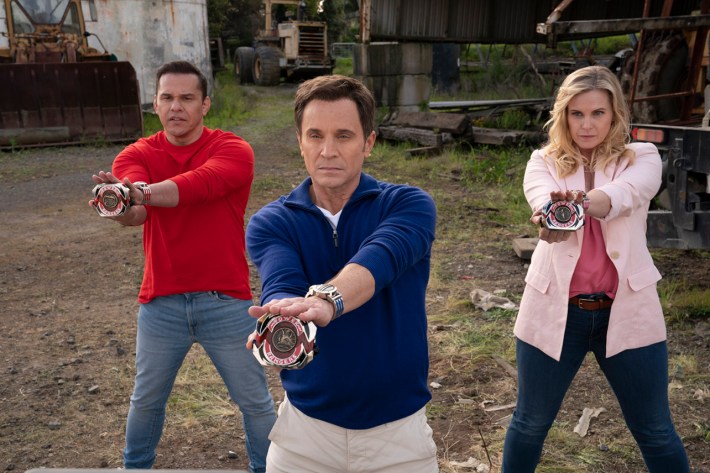
Official merchandise tied to or inspired by MMPR has been consistently available since about 2007, as the show's 15th season was airing and then-rightsholder Disney started chasing nostalgia dollars. I was in high school and still have a Dragonzord T-shirt I bought from Hot Topic that proves that was a wise move.
Versions of this original team are also the ones most featured in most of the comic books published across multiple decades by a host of companies, but most recently and notably Boom! Studios.
So … how many Power Rangers shows are there?
As of May 2025, there are officially 30 seasons of Power Rangers. That's the fast answer.
I want a long answer. Details, please! Where should I start? And what about that asterisk?
Okay, buckle up. This is broken down into the different production "eras" of brand ownership. As of May 2025, four different companies have owned the Power Rangers intellectual property.
SABAN ENTERTAINMENT ERA
(1993-2001)
- MMPR (1993-1995): The first incarnation of the series lasted three seasons. The last 10 episodes of the third season, however, are often recognized as a miniseries, Mighty Morphin Alien Rangers, complete with its own theme-song variant. In it, the core team of Rangers have been de-aged to their pre-teen state and a team of fish-alien Power Rangers from the planet Aquitar defend Earth as they seek a means to return to their teenage selves. The Aquitar Rangers are the first full team of heroes adapted from a non-Zyuranger series, and helped prepare viewers for a forthcoming shift away from the suits they'd come to know and love.
- Power Rangers Zeo (1996): The events of "Hogday Afternoon" end in a cliffhanger and lead directly into this season, where the team trades their classic helmets for ones with shapes on them. This season marks the point where Power Rangers starts to follow its Japanese counterpart in making annual changes to the costumes, Zords, etc. While visually distinct, narratively it really functions more as a fourth season of MMPR, so that's worth bearing in mind before diving in.
- Power Rangers Turbo (1997): It's preceded by a movie that was apparently watched by so few people that a healthy chunk of the first episode is spent recapping the movie's events via clips. The main thing you need to know: it's the only season where one of the Power Rangers is an actual child. I've personally been really partial to Turbo since a re-watch a few years ago, but it's objectively a creatively chaotic season, even by Power Rangers standards. Behind-the-scenes shake-ups contributed to plot lines getting seeded then never revisited and an unfulfilling mass cast replacement less than halfway through production. It ends on a two-part cliffhanger, "Chase into Space," spun and directed by Judd "Chip" Lynn. He, along with writer Jackie Marchand and producer Jonathan Tzachor, leave a lasting imprint on the show in the back half of Turbo and through the subsequent four seasons.

- Power Rangers in Space (1998): Widely regarded by fans as one of the show's finest seasons, it picks up directly from the events of Turbo. This is the first season of the show that clearly aims for an overarching, cohesive narrative. It's full of feel-good moments, subtle callbacks from throughout the series, and a few fun surprises. If you're seeking a Power Rangers entry point that isn't tied to MMPR, it's hard to go wrong by starting with the two-parter "Passing the Torch" in Turbo and going through the entirety of In Space.
- Power Rangers Lost Galaxy (1999): The first time the show resets the cast from the jump. It kept the heroes in space but attempted to detach itself from the existing storyline weaved throughout the first six seasons, though an off-screen development led to some re-tangling by show's end (Valerie Vernon, the actress who plays Kendrix the Pink Ranger, was diagnosed with leukemia during production; she's now cancer free). It's hard to outright recommend it as a great starting point because of that, but it's viable. It also has, for my money, the best theme song in the show's entire history. (TURN ON THE POWER!)
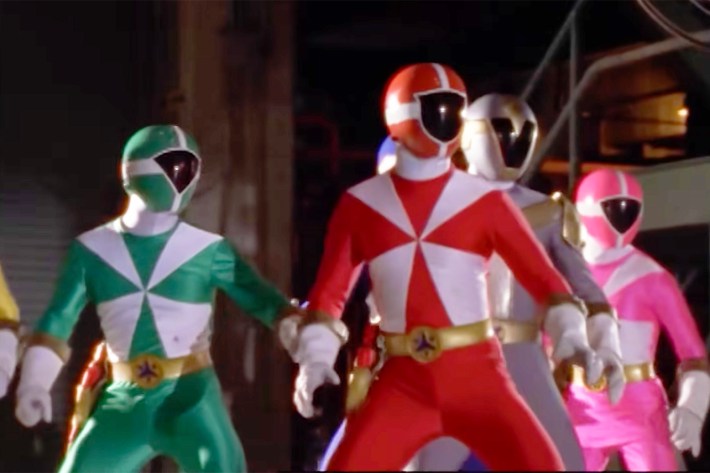
- Power Rangers Lightspeed Rescue (2000): If not for a brief team-up with the Lost Galaxy team (these were common at this juncture of the show), you'd never know this was set within the same continuity as the previous seven seasons. I think that's partly why, back when I was perusing fan forums I probably shouldn't have been perusing as a 9-year-old, it had a sour reception among movers-and-shakers in the nascent internet fandom. I'd argue no season of the show has seen its online reputation improve more than Lightspeed Rescue, which puts the heroes back on Earth and positions them as a pseudo-military operation. It not only deserves that reclamation, but also your watch time: if you only have time for one season of Power Rangers, you'd do well picking this one.
- Power Rangers Time Force (2001): The title's a bit misleading if you're expecting a lot of time travel. Time Force refers to another military-esque operation that chases the lead villain, Ransik (played by Vernon Wells), to the year 2001, where the bulk of the show's events occur. Another longtime fan-favorite season and my personal favorite season, Time Force is another highly recommendable starting point thanks to its ease of entry.
DISNEY ERA
(2002-2010)
- Power Rangers Wild Force (2002): Some fans would argue this should be the last member of the first category. Its development started under Saban Entertainment, but Disney's purchase of the company was finalized in October 2001 and filming didn't begin until November 2001; it's a Disney-produced season. It shares more DNA with the Saban Entertainment era, though, than what comes after it. This was the last season of the show filmed in Los Angeles and still helmed by Tzachor (Lynn and Marchand left after Time Force). Its biggest claim to fame: the 10th anniversary special, "Forever Red," in which every Red Ranger to date suits up for a 22-minute romp, occurs within this season. You gotta check that out even if you skip the season at-large.
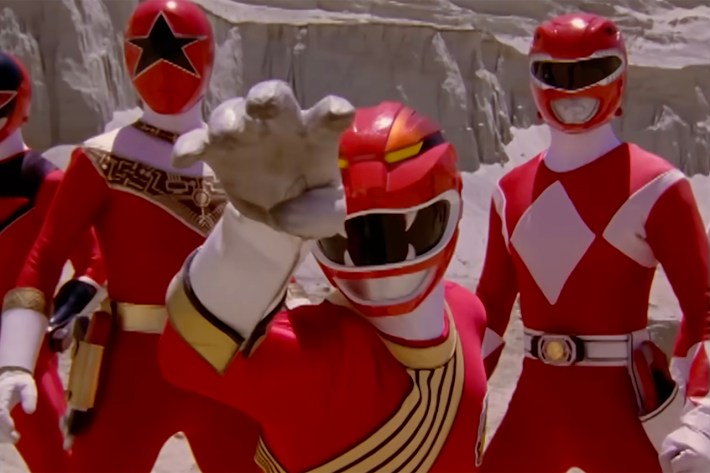
- Power Rangers Ninja Storm (2003): Production moved to New Zealand beginning with this season and remained there for all the remaining seasons. Former Power Rangers scribes Ann Austen and Douglas Sloan had since done several TV movies for Disney and were tapped to produce this iteration, the first to start with a team of three heroes rather than five. It's decidedly more quippy than its predecessors — I posit that Disney's take on Power Rangers as a whole is a prototype for what the MCU would ultimately become, tonally. While that was a bit of a turn-off for many longtime fans in 2003, it's another season to which time has been very kind. Lucha libre-inspired Lothor, a fourth-wall breaker full of one-line pile-drivers, is among the most divisive lead villains in the series' canon. I don't know what it says about me, but the older I get, the more I laugh.
- Power Rangers Dino Thunder (2004): Zordon in the original MMPR theme song requests "five teenagers with attitude" be given the Power Morphers. It took more than a decade but they finally arrived, albeit as a trio, in another dinosaur-themed adventure. Austen and Sloan, who'd worked on the show in some capacity during its heyday, successfully lobbied Jason David Frank to return as Tommy Oliver to be the misfit team's mentor, and a mid-season arc involving a fourth teen parallels his own journey to becoming a Power Ranger. It's essentially "Mighty Morphin Power Rangers made with mid-2000s sensibilities," and the result is phenomenal. That said, it might not be the best starting point if you wanna fully appreciate the re-emergence of the show's "greatest" Ranger.
- Power Rangers S.P.D. (2005): Its biggest sin is being set in the year 2025, comically early even during the year it originally aired. New co-executive producers Bruce Kalish (whose earliest writing credits include 16 episodes of Mork and Mindy) and effects guru Greg Aronowitz, along with series veteran Jackie Marchand, use a police-academy setting to explore themes of betrayal, redemption and identity. Is it incredibly nuanced? No. This show is written for pre-teens. But it's well worth your time, especially as a standalone watch.
- Power Rangers Mystic Force (2006): Adapted from a Super Sentai series inspired in part by a series of books that unfortunately have been tarnished by their author, Mystic Force's charm lies less in magic and more in the generic fantasy backdrop its heroes inhabit. While some seasons lean into fantasy tropes and imagery from time to time, the show typically fits more neatly into the sci-fi category. Mystic Force is a fun reminder that pigeon-holing Power Rangers is a fool's errand, and like most of the Disney seasons is a viable starting place for a newcomer to the franchise.
- Power Rangers Operation Overdrive (2007): Pitched as "Indiana Jones meets Power Rangers," the 15th season quickly loses some steam because of a little thing called budget limitations. By Mystic Force, the show's episode orders had dwindled from 40-plus to 32 — still gaudy by TV standards but more strict when adapting footage from a Japanese show whose episode counts consistently numbered in the 50s. Whether it delivers on it or not might be better for you to judge, Operation Overdrive certainly doesn't lack ambition.
- Power Rangers Jungle Fury (2008): The martial arts are baked into the DNA of Power Rangers, but here they take on a greater role, serving as much of a motif as the animal-themed suits and gear this season's heroes adorn. The 2007 Writers Guild of America strike hampered but did not stall production of this season; former longtime series scribe Chip Lynn — who wasn't involved with the series at this point — intervened to write most of the show while Marchand and others stood in solidarity back home. The show doesn't seem to suffer much from these events, but it's a shame that its progenitors' full creative vision wasn't realized.
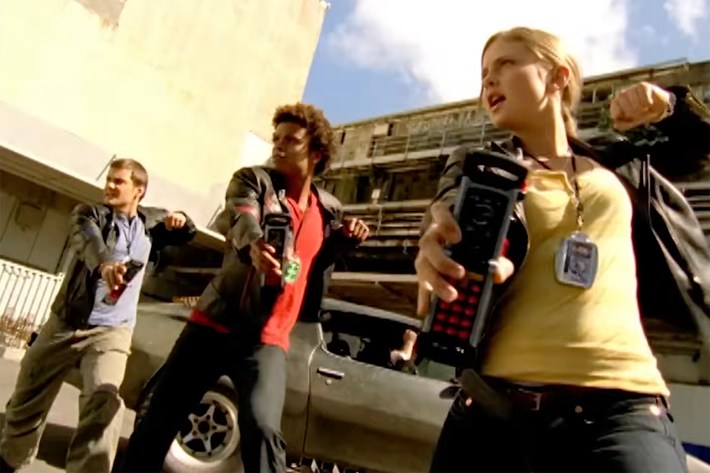
- Power Rangers RPM (2009): First-time executive producer Eddie Guzelian, who'd only ever worked in animation, was given an edict: do whatever you want, we're closing up shop. So he started to make a post-apocalyptic, self-deprecating, "elevated" version of Power Rangers using footage from a Super Sentai series whose Zords talked and had googly eyes. (Power Rangers is the fucking best, y'all.) Alas, Guzellian couldn't keep up with the pace of production and Disney once again called upon Lynn to come save the day. Again, it's hard to discern where the season might've landed if Guzelian had stayed in charge, but it became and remains a fan-favorite season regardless. I personally hesitate to recommend it as an entry point into the show, because it's quite a departure from what most of the series is; its quirks — and there are many — are easier to appreciate coming from a place of love formed elsewhere in the franchise, I think. This season is also notable for featuring Rose McIver — star of Ghosts and iZombie — as the Yellow Ranger, and Eka Darville (Marvel's Jessica Jones) as the Red Ranger.
- *Finally time for the asterisk explanation: The first 32 episodes of MMPR were re-edited, glossed up with comic-book style graphics and other visual effects (including a new logo) and re-broadcast in 2010 to help support an MMPR-centric toy line from Bandai of America, rather than adapt a Super Sentai series. This so-called "reversion" — a fan-created term that was later adopted by brand stakeholders — sort of exists on an island; it clearly isn't a "new" season of the show but it was technically a new broadcast order (with, hilariously, an entire standards-and-practices review of its own). It's not included in the 30-season count, but I tend to include it in my own count of "30 consecutive years broadcasting new episodes" since a "new" order was made and efforts were taken to differentiate them from the original broadcast versions. If you disagree, that's fine.
SABAN BRANDS ERA
(2011-2018)
- Power Rangers Samurai/Super Samurai (2011-2012): Beginning here, most of the following seasons are broken into two 20-episode chunks (with occasional holiday specials); the word "super" functions as a differentiator in name only and the shows really are best considered as 40-episode stories. Haim Saban considered his former cash cow a distressed asset and purchased it from Disney for a song. Jonathan Tzachor was brought back to run the show, which for the most part is a direct translation of its Super Sentai counterpart, especially in the first half. That leads to some awkward storytelling decisions, to say the least (a blonde-haired, blue-eyed Caucasian man with the last name "Shiba" leading the team, to pick an easy target). But, for a rush job, it's solid enough, and it was a hit with kids: ratings on Nickelodeon, the show's new home, bloomed to their highest figures since the first Saban go-around.
- Power Rangers Megaforce/Super Megaforce (2013-2014): Their 42 episodes (holiday episodes included) draw from a ridiculous 101 episodes across Tensou Sentai Goseiger and Kaizoku Sentai Gokaiger. The result, predictably, is chaos. The latter of the two Japanese shows celebrated Super Sentai's 35th anniversary through an incredibly popular team whose core gimmick still remains a fixture in merchandising 15 years later: they're pirates who use "Ranger Keys" to access the powers of the previous 34 Super Sentai teams. Longtime fans of Power Rangers saw that and thought it would blend together magnificently for Megaforce, the premiere of which coincided with Power Rangers' 20th anniversary. Instead, Gokaiger footage is confined to the 20-episode "Super" half and the whole thing leaves a lot to be desired from a celebratory standpoint. Removed from that maelstrom of disappointment, the shows hold up well enough, but it's not surprising that Tzachor left the series for good after these productions.
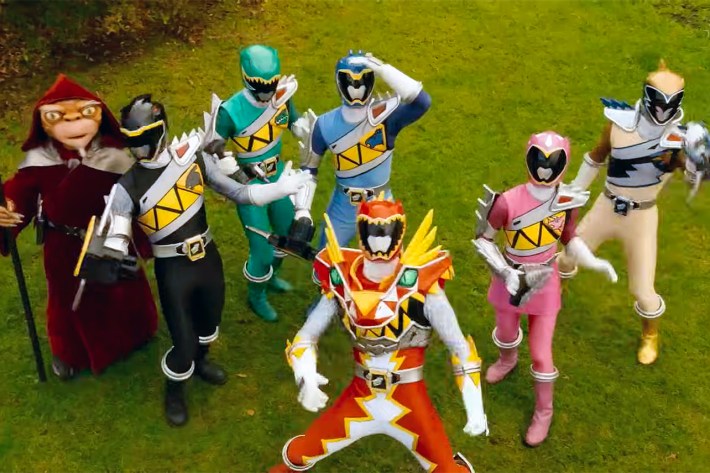
- Power Rangers Dino Charge/Dino Super Charge (2015-2016): It's more or less a rule that if a season of Power Rangers involves dinosaurs, it's gonna be good, and that's especially true of the first half of Dino Charge. Start-to-finish, it's probably the Saban Brands-era season that best navigates an awkward tension that started to weigh down the show: writing it for children while satiating the adult fandom's appetite for more "mature" storytelling. This, too, is another instance of Chip Lynn showing up to "save" the franchise; he remains the showrunner through the next four seasons as well.
- Power Rangers Ninja Steel/Super Ninja Steel (2017-2018): Basically the inverse of the Dino Charge section in terms of general fan sentiment, though time likely will do what it does for most maligned seasons of Power Rangers and supporters will begin to drown out haters. It's very intentional about playing for a younger demographic, which was sensible for a few reasons, among them the fact it was developed in tandem with a third feature film that was very much aiming for an older demographic. Come for "Dimensions in Danger," the 25th anniversary special and final appearance of the legendary Tommy Oliver, and stay for the potty humor.
HASBRO ERA
(2019-2023)
- Power Rangers Beast Morphers (2019-2020): Lynn's final season dropped the "Super" moniker for its second season and for the first time in some time sees the heroes in a military-style setting. It takes some swings, several of them aimed at keeping oldheads invested with lore drops and whatnot, but the show's at its best when it simply tells regular Power Rangers stories — like accidentally erasing a robot's memory to keep your mom from finding out you love to paint. Given the direction it goes, it's a little tough to recommend as a gateway season, but Beast Morphers is a good time.
- Power Rangers Dino Fury (2021-2022): Y'know it's fun because it's got dinosaurs. 4-for-4, baby! Another two-season show, it really starts to deliver in the second half, when a move away from Nick and to Netflix as the primary distributor freed the writing team to do more serialization. The whole 44-episode run epitomizes what Power Rangers is all about: kid-friendly comedy and drama, better choreography and stunt work than you'll see in many Hollywood blockbusters, and a natural embrace of diversity that makes you feel like the world's gonna be alright even as it burns around us. That all said, it does try to tether further into the "lore" of Power Rangers at-large, which might make it a little more intimidating as a gateway series.
- Mighty Morphin Power Rangers: Once & Always (2023): This isn't a season but rather a made-for-TV special that runs just under an hour. Envisioned as a 30th anniversary reunion for the original cast members, only two of them, Walter Jones (Zack the Black Ranger) and David Yost (Billy the Blue Ranger), ultimately were able to return. That has the upside of making the special a bit more accessible to outsiders who might have not watched the show for decades or maybe never even followed it at all; it isn't exactly representative of what Power Rangers looks like entirely — it doesn't use any Super Sentai footage, for example — and it shoots for a slightly higher demographic than the show tends to, but the overall spirit is the same. If you dig this, go diving into some full seasons.
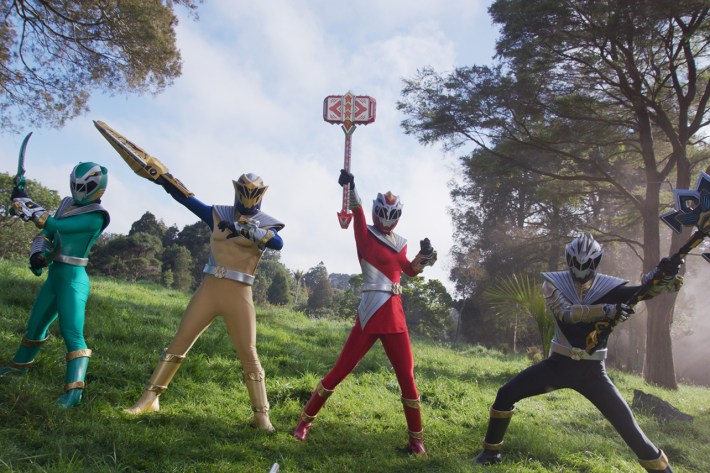
- Power Rangers Cosmic Fury (2023): The show's shortest season — it runs for only 10 episodes — is a direct sequel to Dino Fury, which ends on a pseudo-cliffhanger, and more indirectly Once & Always (Billy serves as a mentor to the main team in this season). It should go without saying that you'll want to have at least watched Dino Fury before diving into what, as of May 2025, is the show's final season. I cried like a baby during the final scenes, but I've been watching the show since I was a baby, so your emotional mileage may vary.
Wow, that was a lot. But … you mentioned movies and comics?
Yup, and an audio adventure, too. Let's quickly sum up some of those additional creations since this Heist Guide is already quite hefty!
Mighty Morphin Power Rangers The Album: A Rock Adventure (1994): Released during MMPR's heyday, it splices together clips of the cast alongside music from the show to create a little audio story. I mostly bring it up as a way to highlight how fucking great the music in Power Rangers is. I believe a good deal of the original show's success is due to its earworm theme song and the other rock anthems deployed as battle music as the show progressed.
Mighty Morphin Power Rangers: The Movie (1995): The most nostalgia-ridden flick of the three is, in my opinion, the objectively worst movie since it somehow manages to reduce paper-thin characters from the TV show into cellulose. Do I love it? You bet your ass I do. Paul Freeman's ridiculous performance as Ivan Ooze alone is worth the price of entry. Of note, this film canonically exists within its own timeline. Power Rangers was doing multiverses well before the MCU made folks wish they didn't exist!
Turbo: A Power Rangers Movie (1997): Of the three theatrical films, it's the only one that exists within the actual show's continuity. It's essential-ish viewing if you're wanting to watch the Turbo season, but you could get by with the recaps there. It looks cheaper than the first movie because it was made by the TV production company, not 20th Century Fox, but its ambition and scale are bigger.
Power Rangers (2017): Forged in a cultural landscape where every superhero movie had aspirations of becoming a billion-dollar franchise, Power Rangers failed to gain traction at the box office. It has since gained a cult following, not unlike its 1995 counterpart. The similarities end there, though. This taps the surface-level trappings of Mighty Morphin Power Rangers and morphs them into a coming-of-age drama with a smidge of blockbuster action. I adore this film, in part because of how much I embraced the hype and hysteria leading up to its release, but I understand where its detractors come from. Watch it with the understanding that there isn't anything else like it in the Power Rangers universe.
Boom! Studios comics (2016-present): There are several previous comics distributors who handled the Power Rangers license — and their books are currently all available in collected editions released by Boom! — but these came along in the mid-2010s to satiate long-time and older fans who wanted a different kind of storytelling than what the TV show could deliver. I'm not gonna break down all the different storyline breakpoints, continuity questions, and one-shots here (maybe in a future Heist Guide!), but if you venture this direction, your best bet is to start with Mighty Morphin Power Rangers Year One by Kyle Higgins.
Cool! Say I've picked a season I'd like to start with — how do I watch it?
Power Rangers has never been more accessible. As of May 2025, in the United States you can access it via …
- DVD/Blu-ray: Physical media for life! Every season of Power Rangers from MMPR season one through Super Ninja Steel is available for purchase on DVD. Shout! Factory handled releases for MMPR through RPM while Lionsgate produced various sets for Samurai onward (they also produced a long out-of-print Blu-ray set for Super Samurai, the only Blu-ray release for the show in America). No sets have been produced for Beast Morphers onward. All three feature films are readily available on DVD, but only the newest film can be easily purchased on high-definition discs; Blu-ray sets for the first two films went out of print within the last couple years.
- YouTube: Complete episodes for every season from Mighty Morphin Power Rangers through Dino Super Charge (including the re-version) are watchable for free on YouTube via the official Power Rangers channel. These are the most complete versions of the involved seasons, as they include various holiday specials that are typically absent elsewhere.
- Netflix: The first two full seasons of Mighty Morphin Power Rangers as well as most of season three (the 10-episode Mighty Morphin Alien Rangers miniseries is missing) are here along with: the re-version; Ninja Steel and Super Ninja Steel; both seasons of Dino Fury; Mighty Morphin Power Rangers: Once & Always; Cosmic Fury; and Power Rangers (2017)
- Tubi: A bit of a smattering. It's got all three seasons of MMPR, again sans MMAR, which is unrepresented on the platform. Everything from Zeo to RPM is accounted for. Samurai is here but not Super Samurai. Megaforce, Super Megaforce, Dino Charge, and Dino Super Charge are available, sans holiday specials. No Ninja Steel or Super Ninja Steel, but it's one of the few places you can watch Beast Morphers.
- PlutoTV: Has season one of Mighty Morphin Power Rangers through RPM. Yes, even the Alien Rangers are here (split off into their own tile).
- The Roku Channel: Dare I say the best place to watch Power Rangers in 2025? It's got everything through season two of Beast Morphers except Ninja Steel and Super Ninja Steel, including Mighty Morphin Alien Rangers (contained within season three) and various holiday specials. Navigating within this app can be a bit of a chore, but it's your most complete one-stop shop for Power Rangers.
- Amazon Prime: The current only streaming home of Mighty Morphin Power Rangers: The Movie and Turbo: A Power Rangers Movie.
- Digital purchases: Most of these seasons and movies are available for purchase digitally through various storefronts. If you're into that sort of thing (I'm very much not), feel free to peruse your preferred vendor!
For even more Power Rangers intel, check out Joshua Moore's Morphenomenal, on sale now.
If you haven't already, consider supporting worker-owned media by subscribing to Pop Heist. We are ad-free and operating outside the algorithm, so all dollars go directly to paying the staff members and writers who make articles like this one possible.

